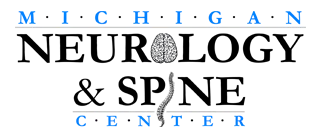What is the Racz Catheter Procedure (Epidural Neurolysis)?
The Racz Catheter Procedure (Epidural Neurolysis) is used to release some of the scar tissue from around entrapped nerves in the epidural space of the spine, so that medications such as cortisone can reach the affected areas. It is used to decrease the pain caused by the scarring. This procedure is named for the physician who pioneered it, Dr. Gabor Racz.
What causes epidural scarring?
Epidural scarring most often occurs from bleeding into the epidural space following back surgery and the subsequent healing process where epidural fat is replaced with fibrotic tissue. It is a natural occurrence following surgical intervention. Sometimes scarring can also occur when a disc ruptures and its contents leak out.
How long does the procedure take?
The procedure generally takes between 30 and 60 minutes. It can be done once, or in a series of up to three injections in a twelve-month period. A catheter is inserted in the caudal epidural space and steered up to the area of scarring. This is done in our fluoroscopy suites under sterile conditions..
What is actually injected?
The injection consists of the following:
- A mixture of local anesthetic (such as Lidocaine or Bupivacaine)
- Steroid medication
- X-ray contrast so that the scarred space can be clearly visualized
- Concentrated sterile salt solution to soften scar tissue
Will the injection hurt?
The procedure involves inserting a needle through skin and deeper tissues. There is some discomfort involved, which will feel like getting a tetanus shot or skin prick. The skin and deeper tissues are numbed with a local anesthetic prior to insertion of the spinal needle and catheter.
Will I receive any sedation for this procedure?
No. This procedure is done using local anesthesia. Communication with the patient during the procedure is important to help assess the proper placement of the catheter.
What should I expect during and after the procedure?
This procedure is done with the patient lying on his or her stomach. The skin is prepped with an antiseptic solution before the procedure is performed under X-ray guidance (fluoroscopy), which is used to assist the placement of the catheter and perform the epidurogram.
After the procedure you will be able to gradually get up and walk into the recovery area. Your legs might feel slightly heavy or numb. You may also notice that your pain may be gone or significantly reduced. This is due to the local anesthetic injected. Although this will last only for a few hours, driving is prohibited following the procedure that day.
When can I return to work?
Unless there are complications, you should be able to return to work the day after the procedure. The most common thing you may feel is a sore back.
How long will the effects of the medication last?
The immediate effect is usually from the local anesthetic that was injected. This effect will usually wear off in a few hours. The cortisone usually starts working in about 3 to 7 days and the effect can last for several days up to a few months.
Will the Racz procedure (Epidural Neurolysis) help me?
It is very difficult to predict if the procedure will help you or not. Overall, patients who have recent scarring, such as scarring following recent back surgery, will respond better than those with more long-term scarring. Patients with leg pain and low back pain often report excellent relief of leg pain and some relief of low back pain.
What are the risks and side effects?
Overall, this procedure is safe. However, with any procedure there are risks, side effects, and the possibility of complications. Fortunately, the serious side effects and complications are uncommon. Risks and side effects may include the following:
- Pain/soreness – the most common side effect, and it is temporary
- Urinary difficulty – Occasionally, people report some difficulty urinating for the first several hours post procedure, but this is temporary.
-
Other risks associated with the Racz procedure can include:
-
Spinal puncture risk/side effects, such as:
- Headaches
- Infection
- Bleeding inside the epidural space with nerve damage
- Worsening of symptoms
-
Cortisone injection risks/side effects, such as:
- Weight gain
- Increase in blood sugar (mainly in diabetics)
- Water retention
- Suppression of the body’s own natural production of cortisone
-
Spinal puncture risk/side effects, such as:
Who should not have this procedure?
You should not have this procedure performed if:
- You are allergic to any of the medications to be injected.
- You are on a blood-thinning medication (e.g., aspirin, Coumadin®, Plavix®).
- You have an active infection.





